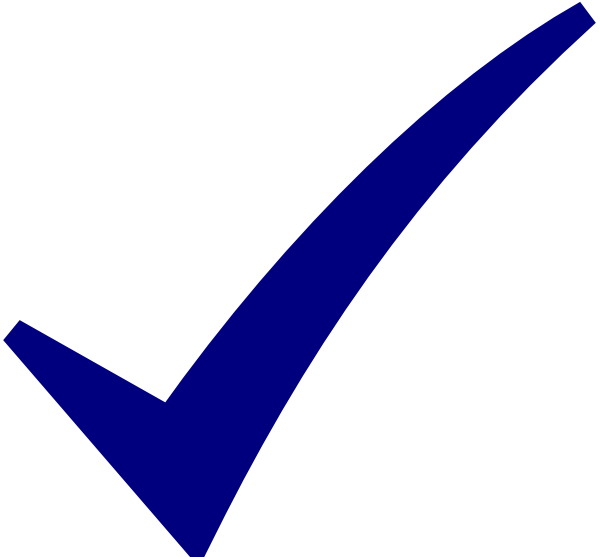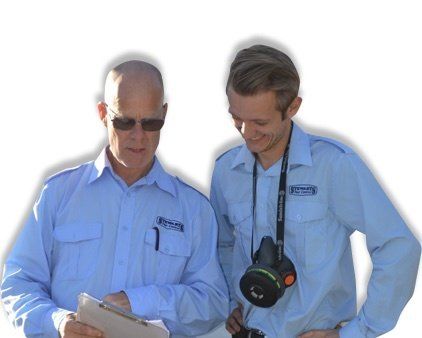Australian Code of Practice
Testing for Methamphetamine Residue
We follow a process of testing that is not only accepted though the Australian Guidelines but is also accepted though the Australian Voluntary Code of Practice.
Request Prices!Stages of Testing
Screening
Detailed
Remediation
Stewarts Drug Testing follows the Australian Voluntary Code of Practice 2019 (AVCP) and strictly follows the Australian Guidelines for testing Methamphetamine Residue. The AVCP brakes down testing to three categories; they are as followed: Screening, Detailed Assessment and Remediation/Validation. Each category specifies tests that are acceptable and unacceptable to use.
Here at Stewarts, we do not support Field Composite testing and discourage the use of Laboratory Composite testing. We support the use of Rapid test, also known
as Presumptive Screening Testing and NIOSH 9111 Lab Testing. We believe these two tests are the most cost effective, ethical and accurate process to follow. The Rapid Test is acceptable for Screening in accordance with the AVCP but is not accepted under Detailed Assessment or Validation Assessment. When it comes to Details Assessment and Remediation/Validation Assessment, we suggest the NIOSH 9111 test due to its extensive accuracy and ability to individualist results without further lab intervention. You can find out more information regarding each test and what its best use is below.
Screening
Rapid/Presumptive Screening Test
Screening assessment is completed to confirm the presence or absence of methamphetamine contamination in a property. All form of testing is accepted when screening for methamphetamine in situations that do not involve insurance claims, legal claims or re-occupancy. If a positive result is received from a rapid/presumptive test, it is noted in the Code of Practice that a detailed assessment should take place.
Detailed
NIOSH 9111 Testing
Detailed testing is completed to identify the extent and magnitude of any methamphetamine contamination and to identify the steps that need to be taken for remediation (decontamination). In accordance with the AVCP, suitable tests include NIOSH 9111 and Laboratory Composite Testing (Only through the two-stage process to individualized results). We can complete either process but recommend the NIOSH 9111 test as it has the ability to individualize each area of the home, providing an exact numerical value of the contamination level. It is a faster and more cost effective way of testing.
Validation
After Decontamination - NIOSH 9111 Testing
Once decontamination is complete, a validation test needs to be complete to assure that methamphetamine residue levels have been reduced to below the 0.5ug Australian Guidelines. The AVCP suggest the use of either NIOSH 9111 test or the Laboratory Composite test (Only through the two-stage process to individualized results). We can complete either process but recommend the NIOSH 9111 test as it has the ability to instantly individualized each area of the home, providing an exact numerical value of the contamination level without the need for further laboratory analysis.
Types of Tests
Rapid
NIOSH 9111
Laboratory Composite
Field Composite
As noted above, four types of test can be used to identify methamphetamine residue within a property. Here at Stewarts, we use two main types of test with the acceptance of a third if the situation calls for it. The four tests available are Rapid/Presumptive tests, NIOSH 9111 test, Field Composite test and the Laboratory Composite testing. Out of these four tests, we offer Rapid/Presumptive testing, NIOSH 9111 testing and occasionally will complete
Laboratory Composite testing when the situation calls for it. We do not provide Field Composite testing due to its restricted nature of providing detailed results.
It is always recommended that every room/areas within a property are tested to identify if methamphetamine contamination is present. A single sample should be taken in each room/area of the property. If this is not possible throughout the home, we recommend completing tests in the high-risk areas and surfaces within the property.
Accepted for Screening
This test provides a positive or negative result to methamphetamine over the Australian Guidelines (0.5ug over a 100cm squared area). This test is fantastic for identifying if a property is contaminated with methamphetamine residue. It will not, however, provide a numerical result of the contamination level. In the situation where a positive result is identified, it is recommended that further testing is completed using the NIOSH 9111 test.
The Rapid/Presumptive Screening test is taken by one of our highly qualified technicians who swabs an area of 100cm squared. As the technician swabs the area, they will place the swab back into a buffer liquid which will pick up any residue. Once the technician has swabbed a suitable amount of surface area, they will then drip the buffer liquid into a cassette. The cassette will then provide a positive or negative result to methamphetamine residue in line with the Australian Guidelines.
NIOSH 9111
Accepted for Screening, Detailed Testing and Validation/Remediation Testing
This test is a more detail lab test where a swab is taken over a 100cm squared area and is sent off to a NATA approved lab to be analysed. It is an individualized sample to one given area of a property. It provides a numerical result of the contamination level within that area tested. This test will identify what process is needed to sufficiently remediate/decontaminate that given area.
The test is taken by one of our highly qualified technicians who swabs an area of 100cm squared. This wipe (NIOSH 9111 gade wipe) is passed over the allocated 100cm squared areas three times. The first pass making a "z" pattern with five lines, the second pass making an "n" pattern with five lines, the final pass then repeats the "z" pattern. This swab is then sealed in a laboratory compliant vial and sent off to the laboratory for analysis. A similar process is followed for more rough/porous surfaces using a dabbing technique. Results are usually received back from the lab within 3-5 working days.
Laboratory Composite
Accepted for Detailed Testing and Validation/Remediation Testing
(only when results are individualized though a two stage process.)
(only when results are individualized though a two stage process.)
This testing process involves the collection of individual samples using the NIOSH compliant method noted above. These swabs are then sent off to a NATA approved lab where the individual results are extracted and then are combined in equal proportions to create a new result called "laboratory composite". This result will reference a theoretical maximum contamination result. From here, the customer can then decide if they would like the results from the individual samples. This would require an additional charge on top of the initial laboratory composite test.
Stewarts do not like to use this method of testing due to its costly process and the potential deceptive nature of the theoretical maximum in particular situations. A Laboratory composite result cannot be used to identify what process of decontamination needs to take place, and it does not break down the test results to individualised rooms unless the second stage of testing is taken place.
Field Composite
Accepted for Screening (Stewarts do not complete this type of testing)
This test involves the collection of multiple samples using the NIOSH compliant process in up to 5 locations. All these wipes are then sent off to a lab in one vial and are analysed together to receive one result. It is not possible to determine how the contamination is distributed over the individual samples using this method.
How do I know what test is right for me?
Determining if a property is contaminated:
Rapid/Presumptive Screening Test or NIOSH 9111
Either of these test can be used to identify if a property could be contaminated with methamphetamine residue. In accordance with the AVCP it is stated that for situation where testing is being completed for insurance, legal or re-occupancy reasons the Rapid/Presumptive Test is not detailed enough and a NIOSH 9111 test needs to be completed.
Other test that are also acceptable under the Australian Code of Practice is the Field Composite test (Stewarts do not offer this testing process due to the deceptive nature of its results) and the Laboratory Composite Test. We recommend using the Rapid/Presumptive Screening test unless testing is for legal, insurance or re-occupancy needs.
Other test that are also acceptable under the Australian Code of Practice is the Field Composite test (Stewarts do not offer this testing process due to the deceptive nature of its results) and the Laboratory Composite Test. We recommend using the Rapid/Presumptive Screening test unless testing is for legal, insurance or re-occupancy needs.
Proof that a property is safe for re-occupation: Recommended - NIOSH 9111
In accordance with the Australian Code of Practice it is noted that acceptable tests include the NIOSH 9111 and Laboratory Composite Testing (Only through the two-stage process to individualized results). Either of these test can be used to identify if a property has methamphetamine residue contamination. We recommend the NIOSH 9111 test as it has the ability to individualize each area of the property without further cost, providing an exact numerical value of the contamination level (It is a faster and more cost effective way of testing). In accordance with the AVCP it is stated that for situation where testing is being completed for insurance, legal or re-occupancy reasons the Rapid/Presumptive Test is not detailed enough and a NIOSH 9111 test or Laboratory Composite (Only through the two-stage process to individualized results). test needs to be completed.
Insurance claims and for legal purposes:
NIOSH 9111
In accordance with the Australian Code of Practice it is noted that acceptable tests include the NIOSH 9111 and Laboratory Composite Testing (Only through the two-stage process to individualized results). We can complete either process but recommend the NIOSH 9111 test as it has the ability to individualize each area of the home, providing an exact numerical value of the contamination level.
Remediation/Validation after decontamination is complete:
NIOSH 9111
In accordance with the Australian Code of Practice it is noted that acceptable tests include the NIOSH 9111 and Laboratory Composite Testing (Only through the two-stage process to individualized results). We can complete either process but recommend the NIOSH 9111 test as it has the ability to individualize each area of the home, providing an exact numerical value of the contamination level. It is a faster and more cost effective way of testing. This test needs to be completed in all areas that were decontaminated and initially received a reading over the Australian Guidelines.




